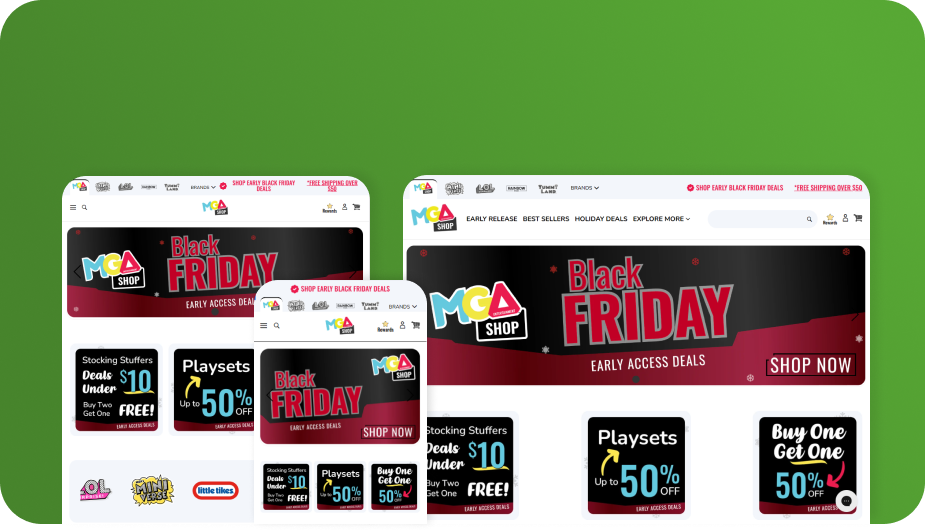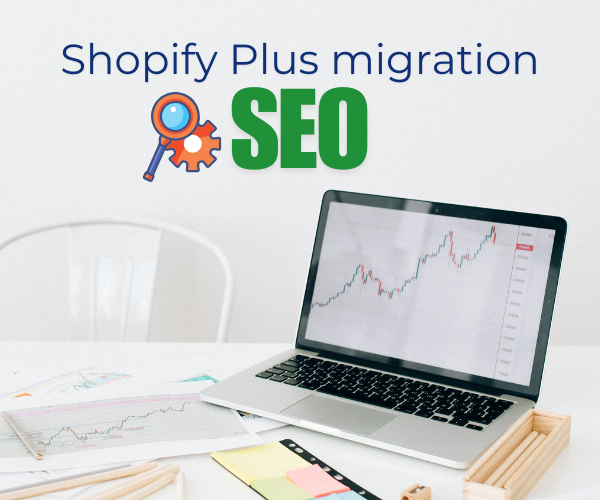Case Study – The Official MGA Toy Store
Transforming a Multi-Brand eCommerce Experience with Shopify 2.0

The Official MGA Toy Store
Overview
MGA faced significant challenges managing their eCommerce operations across multiple brands. Initially, they operated with a single, mostly informational website and individual sites for each brand.
Challenges
These older websites presented the following issues:
- Performance limitations – the legacy Shopify theme resulted in slow load times and inefficiencies.
- Outdated user experience – customers struggled to navigate through collections using outdated tag based filters, which led to frustration and missed opportunities.
- Complex administration – site backend management was cumbersome and limited to homepage customizations.
- Checkout constraints – the old checkout system lacked flexibility and did not support advanced integrations or customization, hindering conversion rates.
Approach & Solutions
We transformed the shop by implementing a Shopify Online Store 2.0-based theme, alongside Checkout Extensibility. Here’s how we addressed the challenges:
Enhanced website performance
- Built a new Online Store 2.0-based theme with a cleaner, more efficient codebase, significantly improving load times.
- Enabled simpler app integration for seamless functionality enhancements.
- Upgraded filtering capabilities with metafield-based filters, making product discovery faster and more intuitive for customers.
Checkout extensibility implementation
- Enabled deep customization of the checkout process, including custom fields and loyalty program integrations for a more engaging customer journey.
- Facilitated seamless third-party app integrations for payment options, upselling and more, without complex coding requirements.
Multi-brand functionality
- Developed a dynamic header system tailored to each sub-brand.
- Created dedicated collection pages for every brand, providing a cohesive and personalized shopping experience.
Tactics and Solutions
1. Enhanced Customization
Merchants can deeply customize the checkout flow to align with their brand and improve the customer experience by adding elements like custom fields, loyalty program integrations, and upsell or cross-sell options.
2. App Integration
Easily connect third-party apps directly within checkout, enabling features like loyalty points, additional payment options, and more—all without complex coding.
3. Developer Control
Access to new APIs and UI components enables developers to create custom apps and checkout experiences efficiently.
4. Secure and Compatible
Shopify manages backend security, ensuring that customizations are secure, compatible, and updated automatically.
5. A/B Testing and Experimentation
Merchants can test different checkout elements to optimize for conversion, allowing for data-driven enhancements.
6. Scalability
Built for high-growth and enterprise merchants, checkout extensibility supports consistent experiences as businesses scale.
Implementing Online Store 2.0 (Shopify) and Checkout Extensibility gave customers a flexible, branded storefront and optimized, faster checkout.
They benefit from personalized experiences, integrated apps, data-driven insights, and a stable, secure platform, all of which enhance engagement and conversions as the business scales.
Total Results

Conclusion
We created a scalable platform that supports multi-brand functionality, enhances customer experiences, and drives business growth. The results speak for themselves: a faster, more intuitive storefront and an optimized checkout process that scales with the business.
Helpful eCommerce Resources
- Omnichannel Retail Made Simple: Connecting NCR Counterpoint with Shopify, WooCommerce, and Magento
- Theme Migration in eCommerce: Why It’s Closer to a Full Platform Migration Than You Think
- The Hidden Cost of Unsynced Systems: Why Your CMS Needs to Talk to Your ERP
- From Chaos to Control: Syncing Orders and Inventory Across eCommerce Platforms
- Can Free Platforms Compete with Shopify Plus? What You’re Really Paying For
- Is Shopify Plus Right for You? These 5 Triggers Say Yes
- The Developer’s Guide to Headless Shopify on Plus: What to Know Before You Start
- Migrating to Shopify Plus Without Killing Your SEO: A Survival Guide












